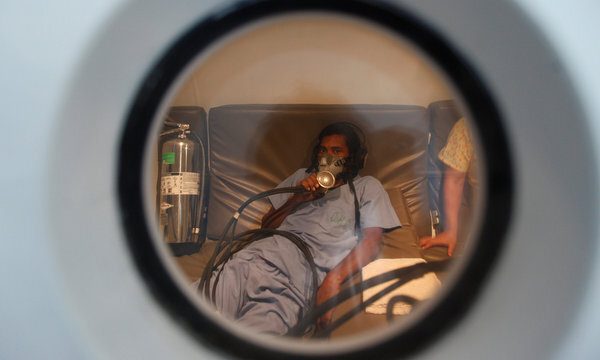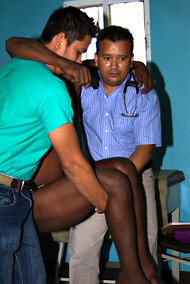Years ago, not long after I started up longstreath.com, I received an email from a man named Robert Izdepski, who had just started a website; SubOceanSafety.
He wanted to ask me if I would post a link up to his site, which was involved in trying to improve the safety of the Honduran Lobster divers. I did this on the early version of longstreath.com, and stayed in email contact with him for a year or so.
After the formation of the Association, and the defining of the Association's aims to improve safety of all divers, over all the world, I thought of Bob Izdepski, and did a search to try and find how to contact him again. Unfortunately, Bob died in 2007 in Costa Rica of heart problems. This made me wonder if his cause had continued, and had any success.
After I googled "Honduran Lobster Fisherment", I found that the issues are hardly improved, and are in fact worse now that before, as the divers have to go deeper to find the dwindling lobster stocks.
It is my hope, and aim, that the Divers Association will one day have enough influence to help bring about change even in these parts of the world.
The following is the story of the Honduran lobster fishermen, taken from The New York Times:
Devoted to Keeping Lobster Divers of Honduras Alive

Wilmer Allen Marly, 27, was treated for decompression sickness at a clinic operated by Dr. Elmer MejÃa.
By ELISABETH MALKIN
Published: September 9, 2011
La Ceiba, Honduras AT a modest clinic down a dirt road, there are rocking chairs on the front porch and a hyperbaric chamber in the front room where Dr. Elmer MejÃa treats deep-sea lobster divers who arrive paralyzed but walk out days later.

Dr. Elmer MejÃa at his clinic.
Courtly in manner and crisply dressed despite the tropical heat, Dr. MejÃa could pass for an accountant in a suburban office park. But his appearance masks a fierce sense of mission. He calls what is happening to his impoverished patients “economic genocide,†and compares the lobsters they collect on the ocean floor to the “blood diamonds†that finance African civil wars.
“Here, the problem is strictly about money, where money is given more value than human life,†Dr. MejÃa said.
Since fishing for spiny lobster off the Caribbean coasts of Honduras and Nicaragua became industrialized in the 1980s to meet demand from the United States, the Miskito Indian divers who are the first link in the supply chain have moved farther and farther out to sea as stocks vanish in shallow waters.
They descend to depths of 100 to 120 feet, repeatedly diving and resurfacing, pushed by poverty to ignore all the safety rules. A few die every season; many more are paralyzed by decompression sickness, commonly known as the bends.
During a two-week fishing trip, they make as many as 12 to 16 dives a day — no more than two are recommended at that depth — to scrabble for a catch that earns them about $3 a pound. (On a productive trip, they may catch as much as 100 pounds of lobster, but they must pay expenses that total about 40 percent.)
Aside from the drug trade, most Honduran Miskito Indians have no other way of making a living. They live in a region so remote that it is reached only by sea or air, and they are among the most neglected inhabitants of an already poor country.
“The only way to avoid the deaths and the injuries is to shut it down completely,†Dr. MejÃa said of the lobster diving industry. “But you can’t do that unless you provide alternatives.â€
Every two or three years, the Honduran government starts to discuss a moratorium. This year, the Central American regional body known as Ospesca, which regulates fishing, did the same, but the fishermen asked for a two-year delay. In 2013, they will ask for a new extension, Dr. MejÃa predicted.
He is also skeptical of intervention by outside groups. The Global Fish Alliance, promoted and largely financed by Darden Restaurants, which owns the Red Lobster chain, has sponsored conferences in La Ceiba to encourage conservation in the lobster fisheries and map out alternatives for the fishermen. “The money doesn’t get to the Miskito Indians,†Dr. MejÃa said. “Nothing has changed so far.â€
Rich Jeffers, a spokesman for Darden Restaurants in Orlando, Fla., pointed to efforts to encourage the fishermen to use traps to catch the lobsters rather than dive for them. The restaurant chain requires its suppliers to purchase only trap-caught lobsters and sends teams to monitor compliance, he said in an e-mail.
But getting into the trapping business requires capital that virtually no Miskito Indians have. Moreover, trapping boats employ only a few fishermen, so a wholesale switch would leave most of the Miskitos without jobs.
HOWEVER the issue is finally decided, if ever, the rickety boats stocked with air tanks at the port here suggest that dive-caught lobster is still in demand.
“There is still a lot of lobster being pulled by hand, and it is being chilled and brought to the U.S.,†said Eric Douglas, a diving safety expert and author who has studied divers in Honduras, Brazil and Mexico. Consumers have forced the tuna industry to protect dolphins and sea turtles, but when it comes to lobster fishing “we don’t seem to care about the human beings,†he said.
Dr. MejÃa, 42, has made easing the plight of the fishermen — he estimates there are about 2,100 of them in Honduras — the purpose of much of his adult life. Raised in a poor family in the capital, Tegucigalpa, he joined the Honduran Navy at 18 because it offered a chance to continue his studies. He became a navy diver and trained as a nurse and a paramedic.
When he left the navy three years later, he moved to Roatán, a Caribbean island where Episcopal missionaries had set up the first hyperbaric chamber for Miskito Indian divers.
Throughout medical school in Tegucigalpa, Dr. MejÃa never wavered. He has climbed aboard the lobster boats to learn more about the fishing trips and endure the same conditions as the divers. Typically, 100 sleep on hammocks slung together in the cramped cabin of a boat measuring no more than 80 feet. To dull pain and fear, they smoke marijuana, clouding the boat with so much smoke that Dr. MejÃa said he had to go to the prow for fresh air.
Finally, in 2009, through contacts in the United States and with financial help from the Episcopal Diocese of Wyoming, he was able to buy the hyperbaric chamber. He rented a truck and drove the chamber to Honduras from Virginia in nine days.
“He is a man of strong conviction,†said Dr. Caroline Fife, the director of clinical research at the Center for Hyperbaric Medicine at Memorial Hermann-Texas Medical Center in Houston, where Dr. MejÃa studied in 2008. “He practices what he believes.â€
The clinic here, called La Bendición, or the Blessing, gets no outside help and is financed by what Dr. MejÃa charges fishing boat owners for treating divers, an average of $300 to $350 per diver. The shoestring operation is a family affair: Dr. MejÃa’s wife, a nurse, their son and a brother, work with him.
Compression sickness occurs when a diver ascends too fast and nitrogen in the bloodstream that is normally expelled by the lungs forms bubbles. The bubbles can lodge in the joints or along the spinal cord, causing paralysis. A bubble that reaches the brain causes an arterial gas embolism, which can be fatal.
In the hyperbaric chamber, the atmospheric pressure is raised to what the diver would experience underwater and then reduced over several hours as the diver breathes oxygen through a mask, allowing the nitrogen to be expelled.
Many of the injured divers have spent days on a boat after becoming sick because captains are reluctant to lose money by returning to shore. Dr. MejÃa has shown that, contrary to standard medical thinking, it is possible to cure patients even after a delay.
“Elmer is seeing some really impressive recoveries,†Dr. Fife said.
IN June, Dr. MejÃa and Mr. Douglas held workshops for boat captains to teach them basic first aid for injured divers. This season, more divers have come into the clinic, but far fewer of them for severe illness.
During an interview, Dr. MejÃa got a call from a boat owner telling him that a new patient was on his way in. The clinic’s “ambulance†— a red pickup truck — picked up the diver at the port.
At the clinic, Dr. MejÃa took the patient’s history: Rolando Pita Gómez, 55. Mr. Pita has been diving since 1975, a testament to the Miskito Indian divers’ extraordinary resilience. “Theoretically they should be dead,†Dr. MejÃa said. “They violate all the physiological diving laws. They dive for 20 or 30 years; we are looking at superhumans.â€
Mr. Pita looked far from superhuman, but he was on his feet two days later.
Wilmer Allen Marly had been brought to the clinic unconscious a week earlier. Somewhat dazed, the 27-year-old fisherman was preparing to return home.
“After this, I don’t want to dive anymore. I have small children,†he said. A cousin of his died in June in a diving accident. “I have to find something else to do to support us.â€
After he said goodbye to Mr. Marly, who had been close to death a week earlier, Dr. MejÃa spoke, almost to himself. There was no sigh, no shrug of resignation, just a simple fact.
“He’ll dive again.â€
Further reading:
-
http://ipsnews.net/a...sp?idnews=22229
-
http://upsidedownwor...nt/view/2115/1/
-
http://www.alertdive..._Divers_at_Risk
YouTube:



Recommended Comments